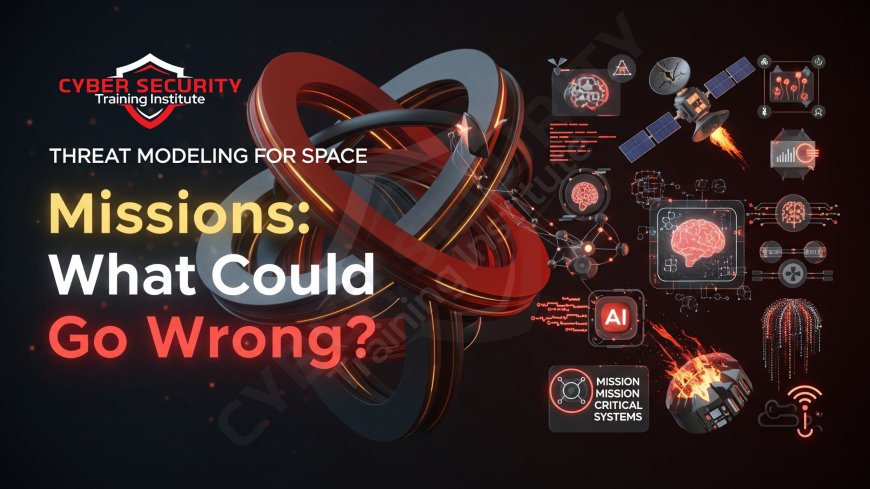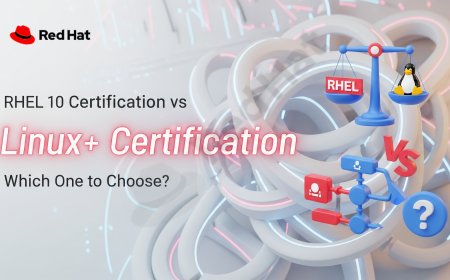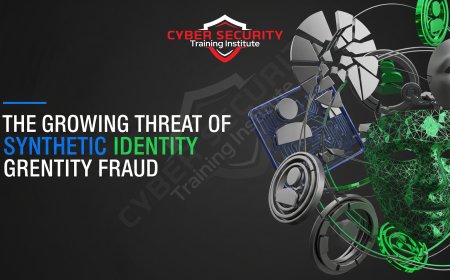Threat Modeling for Space Missions | What Could Go Wrong?
The image of a space mission is one of pristine technology and flawless execution. We see rockets ascending with grace, satellites orbiting in perfect harmony, and rovers exploring alien landscapes. But behind this seamless facade lies a complex web of interconnected systems—and a vast array of potential vulnerabilities. In an era where space assets are integral to national security, communication, and commerce, the question is no longer "Will a space mission be targeted?" but "What could go wrong, and how do we prepare for it?" This is where **threat modeling** comes in. Threat modeling is a proactive approach to cybersecurity that involves systematically identifying, analyzing, and prioritizing potential threats to a system. For a space mission, this process is not just about building a stronger firewall; it's about understanding every single point of failure across a complex system that spans from ground stations on Earth to a satellite hurtling through space at thousands of miles per hour. It’s an exercise in foresight, a meticulous plan to anticipate the worst-case scenarios so that we can build systems that are resilient, redundant, and secure. This blog post delves into the world of threat modeling for space missions, exploring the unique challenges and the types of threats that could jeopardize humanity's ventures into the final frontier.

Table of Contents
- Introduction
- The Unique Challenges of Space Threat Modeling
- The Three Segments: The Attack Surface of a Space Mission
- Common Threat Modeling Methodologies
- What Could Go Wrong? A Deeper Look at the Threats
- From Theory to Practice: Building a Resilient Mission
- Conclusion
- Frequently Asked Questions (FAQs)
The Unique Challenges of Space Threat Modeling
Threat modeling for a space mission is unlike modeling for a typical corporate network. The environment is more hostile, the stakes are higher, and the logistics are exponentially more complex. Key challenges include:
- Remote and Inaccessible Assets: Once a satellite is in orbit, it's virtually impossible to physically access it for repairs or security patches. This means that any vulnerability "baked in" from the design phase can become a permanent, exploitable weakness.
- Long-Term Mission Lifecycles: A space mission can last for decades. A threat model created at the beginning of a mission may be outdated within a few years as new technologies emerge and attack techniques evolve.
- Diverse and Dispersed Systems: A single mission involves a wide array of systems, from launch vehicles and ground control networks to the satellite itself and the user terminals. This creates a vast and complex attack surface.
- High-Stakes Consequences: A successful cyberattack could lead to mission failure, a loss of billions of dollars, and even endanger human lives on crewed missions. The consequences are far more severe than a typical data breach.
Because of these factors, threat modeling for space missions must be a continuous, iterative process that begins in the early design phase and continues throughout the mission's operational life.
The Three Segments: The Attack Surface of a Space Mission
To effectively threat model a space mission, security professionals break the system down into its core components. The "attack surface" is the sum of all the potential entry points an attacker could use to compromise the system. In space, this is typically divided into three main segments:
The Ground Segment
This is the most accessible part of the system for an attacker. It includes mission control centers, ground stations, data processing facilities, and the networks that connect them. Threats to this segment are similar to those faced by any major corporation but with far more severe consequences. They include:
- Network Intrusions: An attacker could gain access to the network through phishing, malware, or exploiting unpatched vulnerabilities to disrupt operations or steal data.
- Supply Chain Attacks: A malicious actor could compromise a piece of software or hardware from a third-party vendor before it's even installed in a ground station.
- Insider Threats: A disgruntled employee or a spy could use their authorized access to sabotage a mission from within.
The Space Segment
This includes the satellite or spacecraft itself. While physically inaccessible, it is a flying computer system with its own software, firmware, and hardware. Threats to this segment are often the most difficult to address but have the most catastrophic potential:
- Onboard Software Manipulation: An attacker could upload malicious code to a satellite's onboard computer, causing it to malfunction or deviate from its mission plan.
- Firmware Tampering: Altering a satellite's firmware can give an attacker low-level control, allowing them to bypass security measures and perform unauthorized actions.
- Sensor and Payload Compromise: An attacker could manipulate a satellite's sensors to provide false data or turn off its cameras and instruments, effectively blinding and deafening the mission.
The Link Segment
This is the communication channel between the ground and space. It is a lifeline for any mission but also a constant point of vulnerability. Threats to this segment are often a form of electronic warfare:
- Jamming: An attacker could use a strong radio signal to overwhelm the satellite's communication link, preventing it from sending or receiving data.
- Spoofing: A malicious actor could send forged commands to a satellite, tricking it into believing they are from an authorized ground station.
- Data Interception: An adversary could intercept the sensitive data being transmitted from a satellite to a ground station, compromising confidential information.
Common Threat Modeling Methodologies
To systematically identify these threats, security teams use established methodologies. Two of the most common frameworks are:
The STRIDE Model
Developed by Microsoft, STRIDE is a mnemonic that helps security professionals categorize and analyze threats. It stands for:
- Spoofing: Impersonating someone or something else. For a space mission, this could be a hacker spoofing a ground station to send false commands.
- Tampering: Modifying data or code. An attacker could tamper with a satellite's telemetry data to hide a malfunction or a malicious command.
- Repudiation: Denying an action. This involves an attacker performing an action (e.g., sending a malicious command) and then erasing the logs to deny that they ever did it.
- Information Disclosure: Exposing confidential information. This could be an adversary intercepting classified data being transmitted from a reconnaissance satellite.
- Denial of Service (DoS): Making a resource unavailable. A DoS attack on a ground station could prevent mission control from communicating with a satellite, leading to a loss of control.
- Elevation of Privilege: Gaining unauthorized access to higher privileges. An attacker could breach a low-level system and then use it to gain administrative control over mission-critical systems.
The PASTA Framework
PASTA stands for "Process for Attack Simulation and Threat Analysis." It is a risk-centric, seven-step framework that connects business objectives with technical requirements. It forces security teams to think like an attacker by simulating potential attack vectors and prioritizing threats based on their business impact. This is particularly useful for space missions, where the consequences of a breach are not just technical but also financial, geopolitical, and strategic.
What Could Go Wrong? A Deeper Look at the Threats
To truly understand the importance of threat modeling, it's helpful to consider some real-world "what if" scenarios. These are not just theoretical; they are the nightmares that keep mission designers awake at night.
- The GPS Blackout: A state-sponsored actor could launch a sophisticated spoofing attack on a GPS satellite constellation. By sending out false signals, they could trick military and civilian receivers into believing they are in a different location. This could lead to massive disruptions in air traffic, ground transportation, and even missile guidance systems, effectively crippling a nation's infrastructure.
- The Supply Chain Backdoor: An adversary could bribe an employee at a small company that produces a microchip used in a satellite. The employee could insert a tiny backdoor into the chip, which lies dormant for years. Once the satellite is in orbit, the adversary could activate the backdoor, gaining unauthorized access to the satellite's systems.
- The Ransomware on Mars: Imagine a deep-space probe transmitting priceless scientific data from Mars. A group of cybercriminals, having successfully infiltrated the ground network, could deploy ransomware that encrypts all the data. The mission would come to a halt, and the valuable data would be held hostage until a ransom is paid. The sheer novelty and stakes of such an attack would make it a terrifyingly effective tool.
These scenarios highlight the diverse and evolving nature of the threats. A single vulnerability can lead to a domino effect of catastrophic failures, which is why a holistic approach like threat modeling is so vital.
Table: A Sample Threat Model Using the STRIDE Methodology
| Threat Category (STRIDE) | Potential Threat to Space Mission | Potential Impact |
|---|---|---|
| Spoofing | An attacker spoofs a ground station's IP to send unauthorized commands. | Loss of satellite control, mission failure, or physical damage. |
| Tampering | A hacker modifies telemetry data to hide a sensor malfunction. | Incorrect diagnostics, leading to a critical system failure. |
| Repudiation | An insider performs a malicious act and then deletes logs to cover their tracks. | Inability to perform a forensic analysis and identify the perpetrator. |
| Information Disclosure | A ground station's database is breached, leaking classified satellite design blueprints. | Theft of intellectual property, compromising a nation's technological edge. |
| Denial of Service (DoS) | A DoS attack floods a ground station's network, preventing it from receiving mission data. | Loss of communication, inability to send critical commands, and potential mission failure. |
| Elevation of Privilege | An attacker gains a low-level account and uses a vulnerability to get full administrative access. | Complete compromise of mission control, allowing the attacker to control the entire mission. |
From Theory to Practice: Building a Resilient Mission
Threat modeling is not just an academic exercise; it's a vital, actionable part of the mission lifecycle. The process typically involves:
- System Decomposition: Breaking down the entire mission architecture into its components and data flows. This helps in mapping out all potential entry points and vulnerabilities.
- Threat Identification: Using frameworks like STRIDE to brainstorm and categorize all possible threats to each component. This step often involves a diverse team of engineers, security experts, and mission planners.
- Risk Assessment: Prioritizing the identified threats based on their likelihood and potential impact. Not all threats are created equal; a risk assessment helps the team focus on the most critical issues first.
- Mitigation and Countermeasures: Developing and implementing security controls to mitigate each of the prioritized threats. This could involve everything from strong encryption for data links to physical access controls for ground stations and the use of secure hardware.
- Validation and Iteration: Continuously testing the security controls and updating the threat model as the mission evolves. This ensures that the defense posture remains effective against new and emerging threats.
By following this rigorous process, space agencies can move from a reactive "fix it when it breaks" mentality to a proactive "what could break?" mindset. It's the difference between hoping for the best and preparing for the worst, a crucial distinction in a domain where failure is not an option.
Conclusion
As humanity pushes further into space, our reliance on space-based technology will only increase. This makes space a more attractive and high-stakes target for adversaries. The old model of securing a space mission by building a stronger fence is no longer enough. Instead, a new paradigm of proactive security, led by a rigorous process of **threat modeling**, is required. By systematically asking "What could go wrong?" and then meticulously planning for every conceivable answer, we can build space missions that are not only technologically advanced but also cyber-resilient. Threat modeling is the intellectual armor for our space ventures, ensuring that the digital front is as secure as the physical one. It is the key to safeguarding our ambitions in the final frontier, ensuring that the future of space exploration is not just extraordinary, but also secure.
Frequently Asked Questions (FAQs)
What is threat modeling?
Threat modeling is a structured process used to identify, analyze, and prioritize potential security threats to a system from an attacker's perspective, allowing developers to implement effective security measures early in the design phase.
Why is threat modeling so important for space missions?
It's crucial because space missions have unique vulnerabilities—assets are remote and difficult to patch, mission lifecycles are long, and the consequences of a breach are catastrophic, including mission failure and a loss of billions of dollars.
What is an "attack surface" in the context of a space mission?
The attack surface is the total sum of all possible entry points an attacker could use to compromise a space mission. This includes the ground, space, and link segments of the system.
What is the difference between the ground, space, and link segments?
The **ground segment** includes all terrestrial facilities like mission control and ground stations. The **space segment** is the satellite or spacecraft itself. The **link segment** is the communication channel connecting the two.
What is the STRIDE model?
STRIDE is a mnemonic device used in threat modeling to categorize threats into six types: **S**poofing, **T**ampering, **R**epudiation, **I**nformation Disclosure, **D**enial of Service, and **E**levation of Privilege.
What is a supply chain attack?
A supply chain attack is when an attacker compromises a component (hardware or software) from a third-party vendor before it is integrated into the final system, creating a hidden vulnerability.
Can a physical attack on a satellite be considered a cyber threat?
While a physical attack is not a cyber threat in the traditional sense, a cyberattack could be used to manipulate a satellite's controls to cause a physical collision with another object in orbit, a form of non-kinetic warfare that has physical consequences.
What is spoofing in space?
Spoofing is when an attacker sends forged signals to a satellite, tricking it into believing the commands are from an authorized ground station. This can give the attacker control over the spacecraft.
What is the PASTA framework?
PASTA stands for "Process for Attack Simulation and Threat Analysis." It is a risk-centric, seven-step threat modeling methodology that focuses on simulating an attacker's perspective and prioritizing threats based on their business impact.
How do you mitigate the threat of repudiation?
Repudiation can be mitigated by implementing robust, tamper-proof logging and audit trails. This ensures that every action is recorded and can be verified, making it impossible for an individual to deny their actions.
What is a DoS attack in space?
A Denial of Service (DoS) attack in space could involve overwhelming a ground station's network with traffic or jamming a satellite's signal to prevent legitimate users from communicating with it, effectively making the service unavailable.
Can insider threats be addressed with threat modeling?
Yes, threat modeling considers insider threats as a significant risk. By modeling the potential actions of a malicious insider, organizations can implement controls like strong access control, network segmentation, and robust monitoring to detect and prevent such threats.
Why is it so difficult to patch a satellite's software?
It's difficult because a satellite's systems are in a harsh, remote environment. While some software updates can be sent via a secure link, the process is slow, and any major hardware or firmware issue cannot be fixed once the satellite is in orbit.
What is a "zero-trust" security model?
A zero-trust model assumes that no user, device, or system—whether inside or outside the network—can be trusted by default. This requires strict verification for every access request, which can be applied to space missions to enhance security.
How does a threat model differ from a vulnerability scan?
A vulnerability scan is a technical scan for known weaknesses. A threat model is a higher-level, strategic process that identifies all potential threats (not just known vulnerabilities) and analyzes them from an attacker's perspective, even before a system is built.
Can threat modeling prevent all cyberattacks?
No, threat modeling cannot prevent all cyberattacks, as no system is 100% secure. However, it significantly reduces the attack surface and helps prioritize and mitigate the most critical risks, making a successful attack much more difficult and costly for an adversary.
What is the role of international law in space cybersecurity?
International law, such as the Outer Space Treaty, is still developing when it comes to cyber warfare. The lack of a clear framework makes it difficult to attribute cyberattacks and establish clear norms of behavior, which is why a strong, proactive defense is so critical.
How can threat modeling protect a rover on Mars?
Threat modeling for a Mars rover would involve analyzing every component and communication link. It would consider threats like unauthorized commands from a compromised ground station or data manipulation from a malicious actor attempting to alter scientific findings.
Is it possible for a satellite to be completely air-gapped?
No, a satellite cannot be truly air-gapped because it must communicate with ground stations to receive commands and transmit data. This communication link is the primary vulnerability that threat modeling must address.
What is the most common motivation for a space cyberattack?
The motivations are diverse but often include **state-sponsored espionage** (stealing technology or intelligence), **disruption** (crippling a nation's infrastructure), and **financial gain** (ransomware attacks or theft of commercial data).
What's Your Reaction?
 Like
0
Like
0
 Dislike
0
Dislike
0
 Love
0
Love
0
 Funny
0
Funny
0
 Angry
0
Angry
0
 Sad
0
Sad
0
 Wow
0
Wow
0









![How to Install RHEL 10 on VMware/VirtualBox [Tutorial]](https://www.cybersecurityinstitute.in/blog/uploads/images/202509/image_430x256_68b56dc967a4a.jpg)






